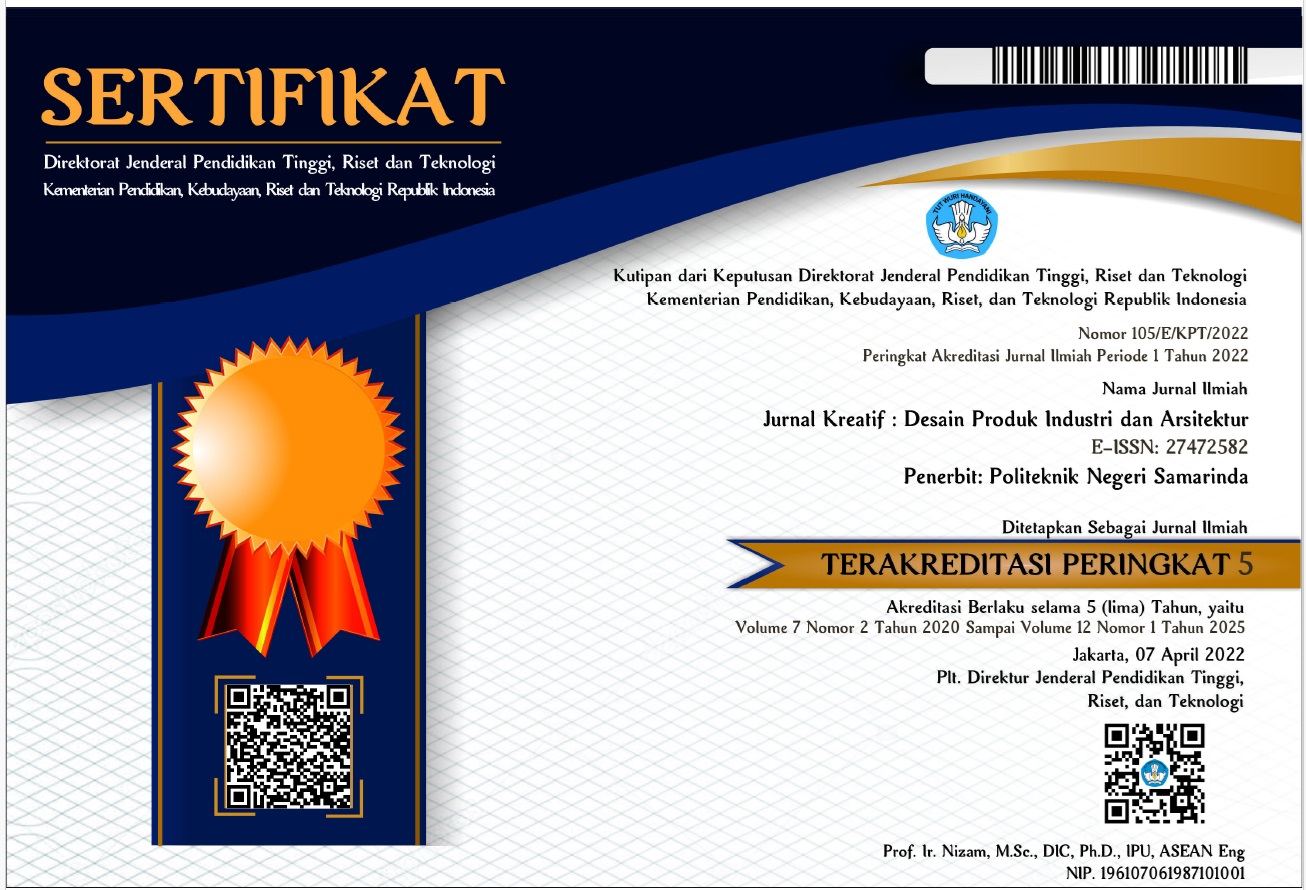PENGGUNAAN FORMAT BITMAP DAN VEKTOR PADA SPANDUK WARUNG MAKAN PEDAGANG KAKI LIMA
 Abstract views: 645
,
Abstract views: 645
,
 pdf downloads: 799
pdf downloads: 799
Abstract
ABSTRAK
Sudah puluhan tahun, bahkan sudah lebih dari seratus tahun yang lalu ada kebiasaan masyarakat dalam mencari rezeki dengan cara menjajakan dagangannya dipinggir jalan. Pedagang yang memiliki kebiasaan berdagang tersebut memilki istilah pedagang kaki lima. Istilah tersebut timbul dikarenakan peraturan pada zaman Hindia Belanda yang disalah artikan,“ Five Foot Way“ yang mengharuskan setiap bangunan besar dipinggir jalan harus menyediakan lahan sebesar Lima Kaki, untu pejalan kaki. Yang berubah pemahaman menjadi Kaki Lima. Dan lahan untuk pejalan kaki yang selebar lima kaki tersebut secara tidak sengaja menjadi tempat mangkal para pedagang keliling. Saat ini, para pedagang kaki lima pasti wajib menggunakan spanduk, sebagai tanda untuk menginformasikan tentang apa yang mereka jual. Awalnya ada hal yang menarik pada penggunaan spanduk ini. Mengapa para pedagang kaki lima, terutama pedangan Pecel Lele, Pecel Ayam dan Seafood masih bertahan menggunakan spanduk tradisional yang masih menggunakan teknik lukis manual. Selain teknik manual yang mereka gunakan, ada hal menarik lainnya yang timbul. Hal tersebut adalah mereka tetap menggunakan gambar hewan yang masih hidup, dengan gambar atau image yang tidak nyata. Dikarenakan penggunaan image yang tidak real, yang mendekati format vektor inilah yang memancing peneliti untuk meneliti penggunaan format vektor dan bitmap pada spanduk pedagang kaki lima.
Kata kunci : kaki lima, vektor, bitmap
ABSTRACT
It's been decades, even more than a hundred years ago there was the habit of the people in seeking sustenance by peddling their wares on the side of the road. Traders who have trade habits have the term street vendors. The term arises because the rules of the Dutch East Indies era were misinterpreted, the "Five Foot Way" which requires that every large building on the side of the road must provide land of five feet, for pedestrians. And the five-foot-wide pedestrian area inadvertently becomes a hangout for mobile traders. At present, street vendors must be obliged to use banners, as a sign to inform them about what they sell. Initially there was something interesting about using this banner. Why do street vendors, especially Pecel Lele, Pecel Ayam and Seafood, still survive using traditional banners that still use manual painting techniques. In addition to the manual techniques they use, there are other interesting things that arise. This is that they still use images of animals that are still alive, with images or images that are not real. Due to the use of images that are not real, which is close to vector format, this is what provokes researchers to examine the use of vector and bitmap formats on street vendor banners.
Keywords: sidewalk, vector, bitmap
Downloads
References
Hedrick, T. E. ((1993).). Applied Research Design. A Practical Guide. California:: Sage Publications.
Itten, J. (1970). The Elements of Color. . New York: Van Nostrand Reinhold Company.
Martin, B. &. ((2012)). . Universal Methods of Design. Beverly: : Rockport Publishers.
mayang sari. (2013). M Sari - Jurnal Seni Rupa, 2013 - jurnalmahasiswa.unesa.ac.id. Retrieved from http://jurnalmahasiswa.unesa.ac.id/index.php/va/article/view/9778: https://media.neliti.com/media/publications/246574-kajian-gambar-dan-tipografi-vernakular-p-0aa99e15.pdf
Authors who publish with this journal agree to the following terms:
- Copyright on any article is retained by the author(s).
- The author grants the journal, right of first publication with the work simultaneously licensed under a Creative Commons Attribution License that allows others to share the work with an acknowledgment of the work’s authorship and initial publication in this journal.
- Authors are able to enter into separate, additional contractual arrangements for the non-exclusive distribution of the journal’s published version of the work (e.g., post it to an institutional repository or publish it in a book), with an acknowledgment of its initial publication in this journal.
- Authors are permitted and encouraged to post their work online (e.g., in institutional repositories or on their website) prior to and during the submission process, as it can lead to productive exchanges, as well as earlier and greater citation of published work.
- The article and any associated published material is distributed under the Creative Commons Attribution-ShareAlike 4.0 International License













